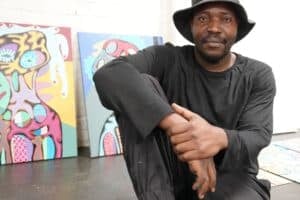The artist believes that art is something we all do in some form every day.

Twenty-year-old self-taught, independent visual artist Harry Stanley does not consider himself to be a professional artist, yet his collection of sketches could easily be mistaken for the work of some of the big names.
The Johannesburg-based young man chats about the hurdles he encountered as a self-taught artist and his dream of exhibiting at New York’s Guggenheim and Johannesburg’s Goodman Gallery.
Did you always want to be an artist?
My knee-jerk reaction would be that I am not an artist. However, the more I think about it, the more I realise how ambiguous the title of artist is. So I would say yes.
I have wanted to be an artist since I was a child. In the last couple of years of high school, I did the A Level curriculum, and everything kicked up a notch.
This was when I truly knew art would be with me for the rest of my life because it allowed me to express on paper what I was too shy and insecure to verbalise. After my A Levels, I couldn’t seem to separate my daily life from my desire to draw.
How would you describe your style of art?
Well, I don’t think I’ve had enough time in my life to really develop a mature sense of style in my artwork just yet. If I were to specify my style, I would say it’s a kind of light-hearted surrealism with some pieces, realism for others and for some commissioned work, it’s just plain illustration.
Have you had any formal training and what did that involve?
During my A Levels, the standard of art was described as being the same as first-year university art. Although I was in a school, a lot was self-taught. The workload was just so big.
I also did a 15-hour controlled examination over the course of three days. In my second and final year of A Levels, I had to do a research thesis and explored the unique and beautiful work of South African political artists.
Are self-taught and street artists getting enough exposure from galleries?
A friend and I were recently discussing the difference between overseas and local galleries and he pointed out how international galleries seem to favour foreign artists more than locals.
However, this is not the case with South African galleries. Here, local artists of any kind are celebrated and encouraged by the public and galleries as well.
Do you get commissioned and are people willing to pay?
I’ve been commissioned about 20 times, but it’s difficult to be taken seriously when the public see that I’m a student.
Genuinely interested clients don’t care too much about price and respect that the work is more than just a pretty picture. For every five people that commission my work, only one person ever really follows through.
Which galleries would you like to exhibit your work in?
The first gallery I ever went to as a child was the Goodman Gallery in Joburg, and I remember being absolutely blown away. I would love to have that effect on someone one day in the Goodman.
New York’s Guggenheim was one of the first international galleries I visited, and I would love to show my work there.
Which of the masters inspires you?
Leonardo Da Vinci. Not specifically for his art, but his vast talent and mastery over various disciplines.
Art does not just happen visually, but through music, poetry and the attainment of any skill driven by pure passion. Da Vinci encapsulates that, and that kind of polymath lifestyle is one I want to pursue as well.
Are there any local artists you look up to and why?
Willie Bester because of his ability to map meaning into every aspect of his sculpture or artwork – like his work titled Trojan Horse and its reference to the malice of apartheid-era police and their brutality in townships.
Another is Peter Mammes for his refined artistic process and unapologetic fascination with the strange.
What advice do you have for self-taught and upcoming artists?
It doesn’t have to be your career for it to be an integral part of who you are. You do not need a degree, studio or gallery connections to be a good or even a great artist.
Art is something we all do in some form every day, but because of the monetisation of visual art, people are taught that they are not artists unless they make money from it.
For more news your way, download The Citizen’s app for iOS and Android.






